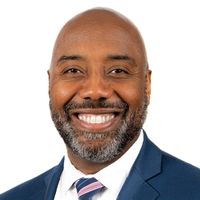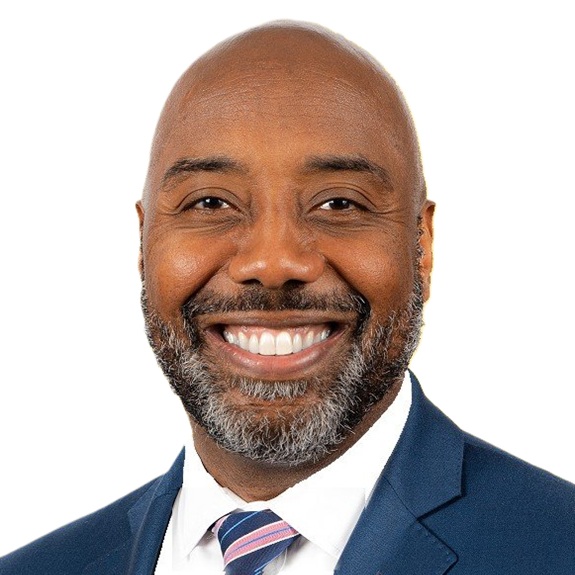Where to Start Financially After a Life-Changing Diagnosis
Dealing with an illness, yours or your child’s or that of another loved one, is hard enough without adding financial duress. Here are some considerations and suggestions for covering expenses.


Picture this: You’re doing well in both your professional and family life. You’ve planned for retirement and have ample savings on hand. Your child has just graduated from college. Then, after experiencing unexplainable back pain, your child goes to the hospital — just as a precaution. Days later, over the phone, the doctor delivers a diagnosis that no parent ever wants to hear: cancer.
It’s a scenario more common than you think: More than 15,000 children between the ages of birth and 19 are diagnosed with cancer each year in the U.S., according to the American Childhood Cancer Organization. And it’s exactly what happened to one father and son I know, whom we’ll refer to as Henry and Brian for their privacy.
For them, like many families in this situation, navigating cancer was a harrowing experience, and it took not just an emotional toll, but a financial one. Since treatment requires ongoing and regular inpatient and outpatient visits, as well as frequent hospitalizations, parents can rack up hundreds of thousands of dollars in medical debt, according to the U.S. Environmental Protection Agency.
From just $107.88 $24.99 for Kiplinger Personal Finance
Become a smarter, better informed investor. Subscribe from just $107.88 $24.99, plus get up to 4 Special Issues

Sign up for Kiplinger’s Free Newsletters
Profit and prosper with the best of expert advice on investing, taxes, retirement, personal finance and more - straight to your e-mail.
Profit and prosper with the best of expert advice - straight to your e-mail.
Dealing with cancer is hard enough without also having to navigate financial duress. With that in mind, here are several financial considerations that parents should be aware of if their child faces a life-changing diagnosis — and what they can do to cover their expenses.
1. Health insurance isn’t always enough.
Health insurance can be a lifesaver in tough medical situations — but don’t expect your health insurance carrier to cover everything. There may be additional costs depending on your plan’s deductible, out-of-pocket maximum and co-pays.
Some of the biggest expenses that most parents have difficulty accounting for stem from out-of-network health care. When Brian first underwent treatment, for instance, his health care provider was considered in-network. Because of that, his health insurance plan covered 90% of his monthly medical bills, saving Henry almost $70,000 a month. But somewhere along the way, the family was forced to change carriers, and they soon discovered Brian’s plan would no longer cover his hospital bills at the same rate. It wasn’t until they contacted the carrier that they were able to negotiate for in-network coverage.
2. Your finances will be impacted in more ways than you think.
Parents need to consider expenses beyond health care. That means being prepared for housing, transportation, paid and unpaid leave from work and other living expenditures, which can be significant — particularly if their child must receive treatment in a different city, state or country. Families who plan to relocate close to a treatment center can expect to spend thousands on the move.
Last-minute flights can also be a major expense, costing as much as $2,000 during the peak travel season. In Henry’s case, these expenses added up to an extra $10,000 a month on top of Brian’s medical bills.
3. There are numerous ways to fund treatment.
Finding the money to cover cancer treatment isn’t easy, but there are multiple options at your disposal. Consider leveraging these financial opportunities (in the order below) to help manage the cost of your child’s treatment:
- Savings and checking accounts. These should be your first go-to, as the money is readily available.
- Friends and family. Consider borrowing from your loved ones before you borrow from banks.
- After-tax investment accounts. Unlike retirement plans, after-tax investment accounts do not have hardship withdrawal provisions, which makes them easier to withdraw from in case of a medical emergency.
- Retirement accounts. Retirement plans such as Roth IRAs and 401(k)s allow you to withdraw cash penalty-free for unreimbursed qualified medical expenses, so long as those withdrawals don’t exceed 10% of your adjusted gross income.
- Life insurance. You can borrow against the cash value of your child’s permanent life insurance potentially tax-free. This means it’s important to lock in your child’s life insurance policy as soon as possible — children with critical illnesses are often considered uninsurable, and it’s one of the most efficient ways to create an estate for the next generation.
- Home equity line of credit. You can borrow up to 85% of the value of your home, minus what you owe, by opening a second mortgage. Note that, after the draw period, you typically will have to pay this mortgage off within 20 years.
- Liquidate real estate. If you have a substantial amount of equity in your home or other properties, you may be better off selling them altogether than taking on high-interest debt.
- Credits cards. With the average interest rate on credit cards sitting at a sky-high 27.81%, you should rely on them only as a last resort.
4. The situation for “adult kids” is different.
Brian was 23 years old when he received his diagnosis — but what if he had been older?
If your child is over the age of 26, you’ll need to prepare several legal documents right away, including a power of attorney, living will, health care proxy and advance health care directive, so that you can make decisions for your child if they are incapacitated or unwilling to undergo treatment.
If possible, you should pursue these rights as soon as your child turns 18, so that you’re not scrambling to obtain court orders while your child is undergoing treatment.
5. The end of formal treatment is not the finish line.
One of the biggest costs during this experience isn’t financial — it’s emotional. Understandably, you will likely be distracted by your child’s diagnosis, and you may not perform to your fullest, be it at work, home or church. The smallest moment — a smell, a sound, a television commercial — can bring you to tears. Your career goals will almost certainly become less of a priority.
That’s why it’s important to recognize that this journey won’t stop after your child has come home from the hospital. As Henry sees it, cancer treatment has three stages: diagnosis and initial care, formal treatment and resolution, and recovery. Formal treatment can take years, and the recovery stage, which is often the least talked about, can be the most challenging to face.
You may have to accept that your child may never be the same after chemotherapy due to the treatment’s impact on their body and mind. The long-term impact of this irrevocable shift is a weight both you and your family will carry forever. But now your child has another opportunity to pursue the life they want to live.
There is no such thing as over-saving or over-planning
Though no one wants to envision their child getting sick, evaluate your financial plan to make sure you are ready for the unexpected.
And if your child has received a cancer diagnosis, know that could be light at the end of the tunnel. Brian, for instance, ended up changing his professional direction. He pursued a law degree and is now a partner at a law firm.
Cancer and other life-threatening diseases are horrific enough. Getting your financial house in order won’t change the diagnosis, but it could help ease the burden so that you can focus on what really matters — getting your child the care they need.
This article has been obtained from an outside source and is provided as a courtesy by Stephen B. Dunbar III, JD, CLU, Executive Vice President of the Georgia Alabama Gulf Coast Branch, you should consult your own legal and financial professional regarding your particular circumstance. Applications for life insurance are subject to underwriting. No insurance coverage exists unless a policy is issued and the required premium to put it in force is paid. Guarantees are based on the claims-paying ability of the issuing insurance carrier.
Stephen Dunbar offers securities through Equitable Advisors, LLC (NY, NY 212-314-4600), member FINRA, SIPC (Equitable Financial Advisors in MI & TN). Annuity and insurance products offered through Equitable Network, LLC. Equitable Network conducts business in CA as Equitable Network Insurance Agency of California, LLC, in UT as Equitable Network Insurance Agency of Utah, LLC, in PR as Equitable Network of Puerto Rico, Inc. GE-6038756.1(10/23)(Exp.10/25)
Related Content
- Three Legal Documents Your Child Should Sign When They Turn 18
- Estate Planning Lessons from My Mother’s Cancer Diagnosis
- Estate Planning Tips: How to Pick POAs, Health Surrogates and Trustees
- Are You Prepared for Health Care Costs While in Retirement?
- Five Mistakes to Avoid When Writing a Financial Power of Attorney
Profit and prosper with the best of Kiplinger's advice on investing, taxes, retirement, personal finance and much more. Delivered daily. Enter your email in the box and click Sign Me Up.

Stephen Dunbar, Executive Vice President of Equitable Advisors’ Georgia, Alabama, Gulf Coast Branch, has built a thriving financial services practice where he empowers others to make informed financial decisions and take charge of their future. Dunbar oversees a territory that includes Georgia, Alabama and Florida. He is also committed to the growth and success of more than 70 financial advisers. He is passionate about helping people align their finances with their values, improve financial decision-making and decrease financial stress to build the legacy they want for future generations.
-
 'Humbug!' Say Consumers, Despite Hot GDP: Stock Market Today
'Humbug!' Say Consumers, Despite Hot GDP: Stock Market Today"The stock market is not the economy," they say, but both things are up. Yet one survey says people are still feeling down in the middle of this complex season.
-
 The SEC Is Concerned for Older Investors and Retirement Savers. Here's What You Should Know
The SEC Is Concerned for Older Investors and Retirement Savers. Here's What You Should KnowThe SEC focusing on older investors, retirement and college savers, and private securities. Here's how those changes impact you.
-
 Vesting, Catch-Ups and Roths: The 401(k) Knowledge Quiz
Vesting, Catch-Ups and Roths: The 401(k) Knowledge QuizQuiz Test your understanding of key 401(k) concepts with our quick quiz.
-
 How to Protect Yourself and Others From a Troubled Adult Child: A Lesson from Real Life
How to Protect Yourself and Others From a Troubled Adult Child: A Lesson from Real LifeThis case of a violent adult son whose parents are in denial is an example of the extreme risks some parents face if they neglect essential safety precautions.
-
 To Build Client Relationships That Last, Embrace Simplicity
To Build Client Relationships That Last, Embrace SimplicityAs more automation becomes the norm, you can distinguish yourself as a financial professional by using technology wisely and prioritizing personal touches.
-
 Client Demand Is Forcing Financial Advisers to Specialize: How to Deliver
Client Demand Is Forcing Financial Advisers to Specialize: How to DeliverThe complexity of wealthy clients' needs — combined with AI and consumer demand — suggests the future of financial planning belongs to specialized experts.
-
 A Financial Planner Takes a Deep Dive Into How Charitable Trusts Benefit You and Your Favorite Charities
A Financial Planner Takes a Deep Dive Into How Charitable Trusts Benefit You and Your Favorite CharitiesThese dual-purpose tools let affluent families combine philanthropic goals with advanced tax planning to generate income, reduce estate taxes and preserve wealth.
-
 A 5-Step Plan for Parents of Children With Special Needs, From a Financial Planner
A 5-Step Plan for Parents of Children With Special Needs, From a Financial PlannerGuidance to help ensure your child's needs are supported now and in the future – while protecting your own financial well-being.
-
 How Financial Advisers Can Best Help Widowed and Divorced Women
How Financial Advisers Can Best Help Widowed and Divorced WomenApproaching conversations with empathy and compassion is key to helping them find clarity and confidence and take control of their financial futures.
-
 A Wealth Adviser Explains: 4 Times I'd Give the Green Light for a Roth Conversion (and 4 Times I'd Say It's a No-Go)
A Wealth Adviser Explains: 4 Times I'd Give the Green Light for a Roth Conversion (and 4 Times I'd Say It's a No-Go)Roth conversions should never be done on a whim — they're a product of careful timing and long-term tax considerations. So how can you tell whether to go ahead?
-
 A 4-Step Anxiety-Reducing Retirement Road Map, From a Financial Adviser
A 4-Step Anxiety-Reducing Retirement Road Map, From a Financial AdviserThis helpful process covers everything from assessing your current finances and risks to implementing and managing your personalized retirement income plan.